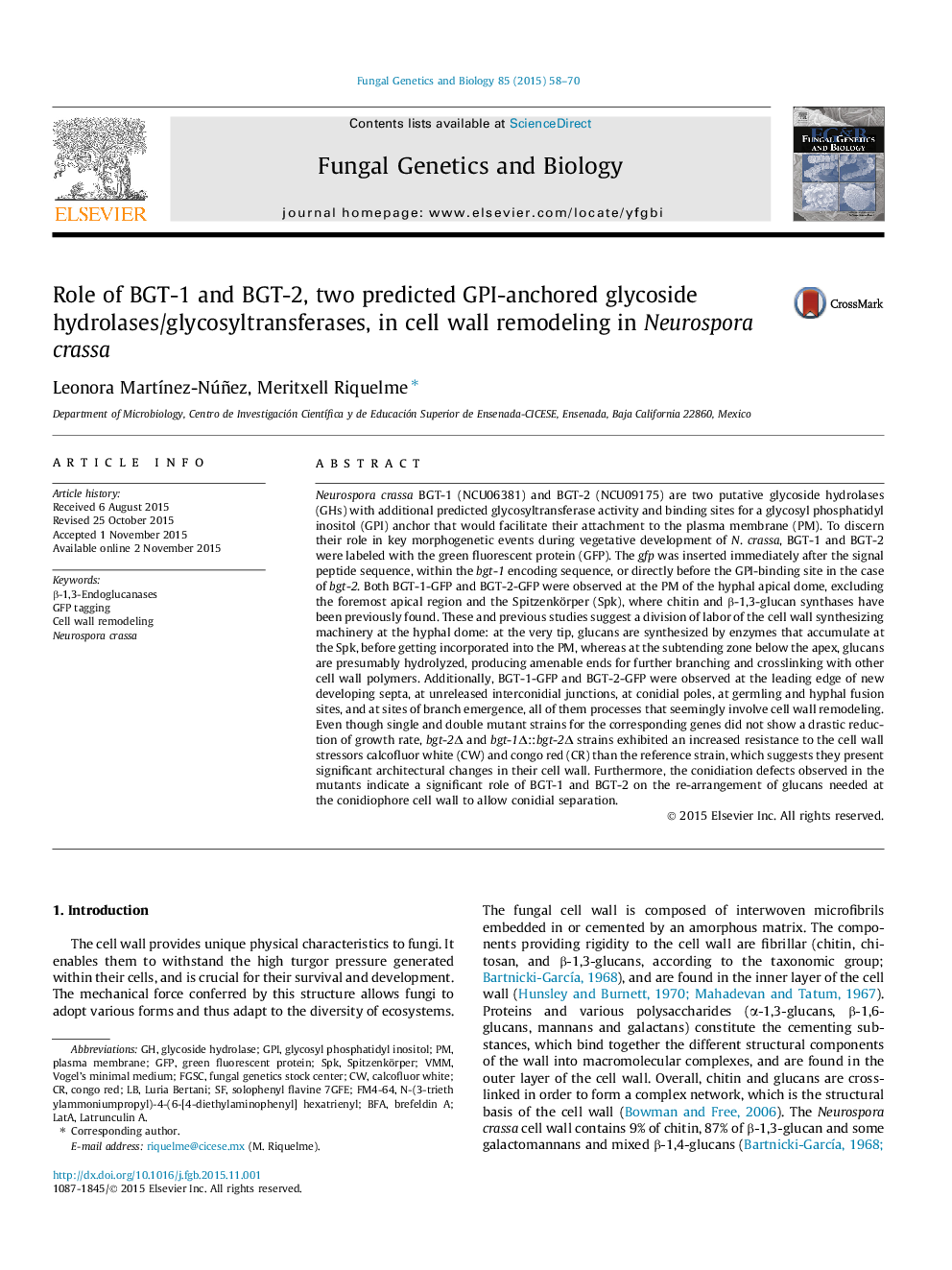| کد مقاله | کد نشریه | سال انتشار | مقاله انگلیسی | نسخه تمام متن |
|---|---|---|---|---|
| 2180675 | 1550006 | 2015 | 13 صفحه PDF | دانلود رایگان |

• Role of glycoside hydrolases BGT-1 and BGT-2 from GH-17 in Neurospora crassa.
• GFP-tagging strategy for secreted proteins with a GPI anchor.
• BGT-1 and BGT-2 localization at cell wall remodeling sites.
• Prominent role of BGT-1 and BGT-2 in conidial separation.
• Proposal for an integrative model of action for BGT-1 and BGT-2.
Neurospora crassa BGT-1 (NCU06381) and BGT-2 (NCU09175) are two putative glycoside hydrolases (GHs) with additional predicted glycosyltransferase activity and binding sites for a glycosyl phosphatidyl inositol (GPI) anchor that would facilitate their attachment to the plasma membrane (PM). To discern their role in key morphogenetic events during vegetative development of N. crassa, BGT-1 and BGT-2 were labeled with the green fluorescent protein (GFP). The gfp was inserted immediately after the signal peptide sequence, within the bgt-1 encoding sequence, or directly before the GPI-binding site in the case of bgt-2. Both BGT-1-GFP and BGT-2-GFP were observed at the PM of the hyphal apical dome, excluding the foremost apical region and the Spitzenkörper (Spk), where chitin and β-1,3-glucan synthases have been previously found. These and previous studies suggest a division of labor of the cell wall synthesizing machinery at the hyphal dome: at the very tip, glucans are synthesized by enzymes that accumulate at the Spk, before getting incorporated into the PM, whereas at the subtending zone below the apex, glucans are presumably hydrolyzed, producing amenable ends for further branching and crosslinking with other cell wall polymers. Additionally, BGT-1-GFP and BGT-2-GFP were observed at the leading edge of new developing septa, at unreleased interconidial junctions, at conidial poles, at germling and hyphal fusion sites, and at sites of branch emergence, all of them processes that seemingly involve cell wall remodeling. Even though single and double mutant strains for the corresponding genes did not show a drastic reduction of growth rate, bgt-2Δ and bgt-1Δ::bgt-2Δ strains exhibited an increased resistance to the cell wall stressors calcofluor white (CW) and congo red (CR) than the reference strain, which suggests they present significant architectural changes in their cell wall. Furthermore, the conidiation defects observed in the mutants indicate a significant role of BGT-1 and BGT-2 on the re-arrangement of glucans needed at the conidiophore cell wall to allow conidial separation.
Figure optionsDownload high-quality image (221 K)Download as PowerPoint slide
Journal: Fungal Genetics and Biology - Volume 85, December 2015, Pages 58–70